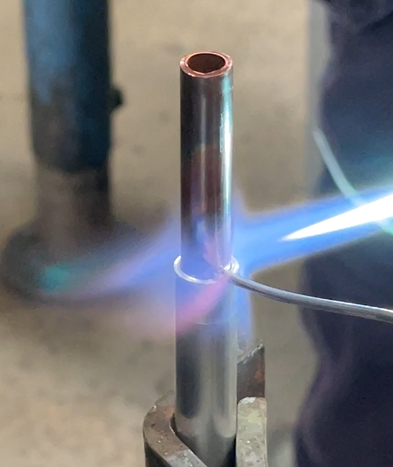Brazing vs Welding
Brazing and welding are both methods used to join two metals together. These processes have been used since ancient times (3000 B.C) by civilizations like the Egyptians for making weapons, tools, artifacts, and decorating jewelry.
Welding
Welding is a method used to join two metals by melting the base metals themselves along with welding wire (same material as the base metals) to fuse them together. Therefore, welding requires a higher working temperature, starting at the melting point of the base metals, compared to the brazing process. Consequently, it’s not feasible to weld materials with significantly different melting temperatures together.

Brazing
Brazing is a method used to join two metals using a filler material (braze alloy) that has a higher melting temperature than solder but lower than the base metals. The base metals are not melted; instead, the filler material, when melted, forms a bond by flowing between them. Brazing requires a lower working temperature than welding but higher than soldering, typically above 450 degrees Celsius (840 degrees Fahrenheit). This allows the bonding of materials with varying melting temperatures.
The distinction between brazing and welding lies in the temperatures used and the way the materials are fused together. Welding involves melting the base metals, whereas brazing involves melting a lower-temperature filler material to create the bond between the metals.
| Lodning | Svejsning |
|---|---|
| Metaller med forskellige smeltetemp. kan forbindes | Metaller med ca. samme smeltetemp. kan forbindes |
| Glat overfladefinish | Svejsekrater |
| Lavtemperaturproces | Højtemperaturproces |
| Samling af tyndvæggede emner | Samling af tykvæggede emner |
| Kræver ikke efterfølgende varmebehandling | Kræver typisk efterfølgende varmebehandling |
| Simpelt udstyr kan anvendes | Kræver avanceret udstyr |
| Moderat til høj samlingsstyrke | Høj samlingsstyrke |

